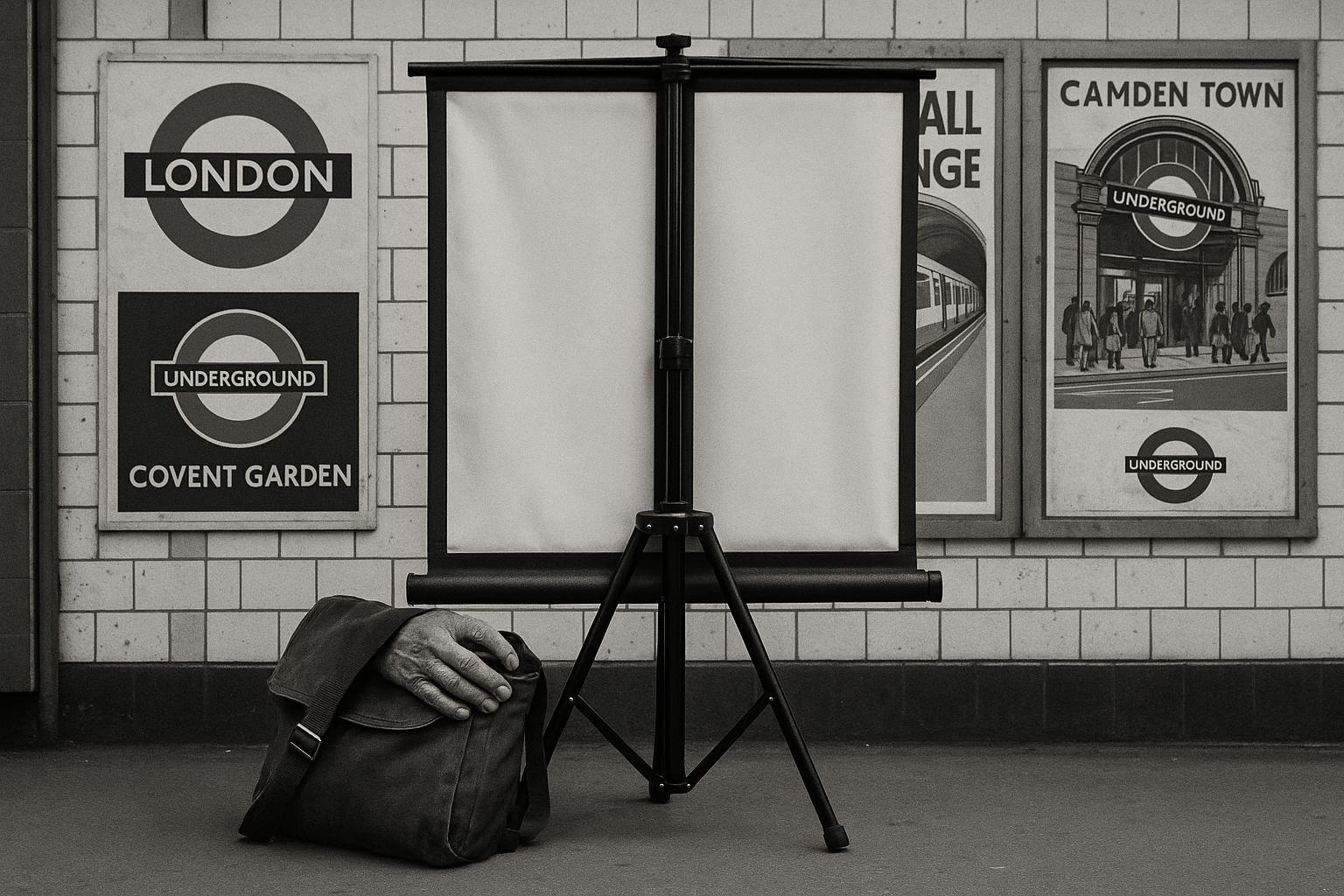I had planned a quiet movie night, but as the tech‑minded flatmate it fell to me to make sure everyone could actually see what was on screen. Rather than buying a purpose‑built projector screen that would spend most of its life gathering dust in a small London flat share, I took a different route: I borrowed one from a community rental service and saved myself the cost and the clutter. According to the What Hi‑Fi? account of the evening, renting a 60‑inch screen from a Library of Things location worked out at under a tenner for the day — a fraction of the roughly £115 it would cost to buy the same model outright. The writer also reported a minor logistical hiccup: the unit was heavier and more awkward to carry on the Tube than the listing suggested, but once installed it delivered a much better picture than a sheet or plain wall.
A dedicated projection surface matters. The What Hi‑Fi? writer found that plain walls and bedsheets scatter light and fail to produce an even image, and consumer‑tech guides explain why: a proper screen reflects light more evenly and preserves contrast and colour, letting a projector show its best detail. Practical buying and setup guides stress that screen choice and placement — fixed, roll‑down or portable — interact with projector type, room size and ambient light, so a screen is not simply cosmetic but often the difference between a watchable image and a genuinely cinematic one.
Community rental schemes make that upgrade accessible without the commitment of ownership. Library of Things is a UK social enterprise that lists household and DIY kit for short‑term hire via local hubs and self‑service kiosks; its service model is designed to reduce waste and unnecessary purchases by letting neighbours borrow rather than buy. The organisation’s guidance emphasises quick online reservations, affordable daily fees, and simple collection and return procedures, and it publishes impact figures showing how shared use reduces both cost and CO2. Broader coverage of the sector notes that such “rental libraries” have expanded in recent years as consumers seek savings and lower environmental impact, and that schemes often pair borrowing with repair support and community skill‑sharing.
In practice the process is straightforward but not entirely without trade‑offs. The What Hi‑Fi? writer described collecting the screened unit from a library locker after making an online reservation and bringing it home to set up for the evening. The screen — affectionately named by staff — did prove heavier than the stated 8.1kg and awkward on public transport, so anyone planning the same should consider transport and handling before booking. Once in place, however, the improvement in picture quality was immediate and noticeable, which is the point: for a one‑off event the small rental fee bought a vastly better viewing experience than a makeshift surface.
Cost comparisons underline the appeal of borrowing for occasional use. Peer‑to‑peer hire marketplaces list comparable 60‑inch freestanding screens for daily fees that typically range from a few pounds up to around £20 or more depending on the lender and location, while major retail listings show similar screens for purchase at prices commonly above £100 (US listings for popular 60‑inch models show typical prices around US$125). That math makes renting the economical option for single events or infrequent use, while owning still makes sense for regular movie‑night households.
If you do borrow, a few setup basics will help you get the most from the hire. Buying and setup guides recommend checking throw distance and whether you need a short‑throw projector for a small room, choosing the right screen type for portability versus image stability, and managing ambient light with curtains or blackout blinds. They also suggest simple projector adjustments — keystone correction, focus and zoom — and thinking about speaker placement and cabling so sound and picture work together to approach a cinema‑style experience.
For many urban viewers the balance between cost, convenience and sustainability now tilts towards borrowing. The Library of Things model and similar rental libraries let people access better kit without adding to household clutter or the environmental cost of manufacturing and shipping new goods. As the What Hi‑Fi? account demonstrates, a modest outlay and a short trip to a local kiosk can transform a casual film night into something much closer to a home cinema — provided you’re ready for a bit of muscle on the way home.
📌 Reference Map:
##Reference Map:
- Paragraph 1 – [1], [6]
- Paragraph 2 – [1], [2]
- Paragraph 3 – [3], [4], [7]
- Paragraph 4 – [1], [4]
- Paragraph 5 – [5], [6], [1]
- Paragraph 6 – [2]
- Paragraph 7 – [3], [7], [1]
Source: Noah Wire Services
